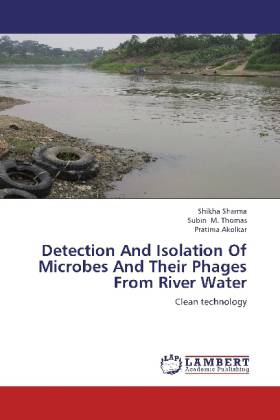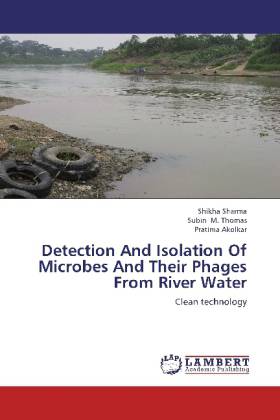
- Afhalen na 1 uur in een winkel met voorraad
- Gratis thuislevering in België vanaf € 30
- Ruim aanbod met 7 miljoen producten
- Afhalen na 1 uur in een winkel met voorraad
- Gratis thuislevering in België vanaf € 30
- Ruim aanbod met 7 miljoen producten
Zoeken
Detection And Isolation Of Microbes And Their Phages From River Water
Clean technology
Shikha Sharma, Subin M. Thomas, Pratima Akolkar
Paperback | Engels
€ 65,45
+ 130 punten
Omschrijving
The River Yamuna, the largest tributary of River Ganga has been one of the most prominent and important rivers of India. Unfortunately, certain stretches of River Yamuna are much polluted. In return, almost the entire wastewater generated by these centers is disposed off into the river. This is the prime reason for deterioration of Yamuna River water quality. Rapid urbanization in Delhi has further compounded the pressure on the sewerage system. Apart from point sources of pollution, diffused sources of pollution such as agricultural pollution and various instream uses of water such as cattle wading, bathing, open defaecation and cloth washing add to the deterioration of river water quality. Although identification of the pathogenic bacteria in few rivers have been done but this is for the first time that we are examining the different water samples from various locations of River Yamuna and selectively isolating bacterial pathogens on respective selective medium allowing only desired bacteria to grow in the enrichment media, staphylococcus aureus and salmonella typhi were detected in the river Yamuna water samples at every location along with their respective bacteriophages.
Specificaties
Betrokkenen
- Auteur(s):
- Uitgeverij:
Inhoud
- Aantal bladzijden:
- 88
- Taal:
- Engels
Eigenschappen
- Productcode (EAN):
- 9783659350412
- Verschijningsdatum:
- 20/02/2013
- Uitvoering:
- Paperback
- Afmetingen:
- 150 mm x 220 mm
- Gewicht:
- 141 g

Alleen bij Standaard Boekhandel
+ 130 punten op je klantenkaart van Standaard Boekhandel
Beoordelingen
We publiceren alleen reviews die voldoen aan de voorwaarden voor reviews. Bekijk onze voorwaarden voor reviews.








